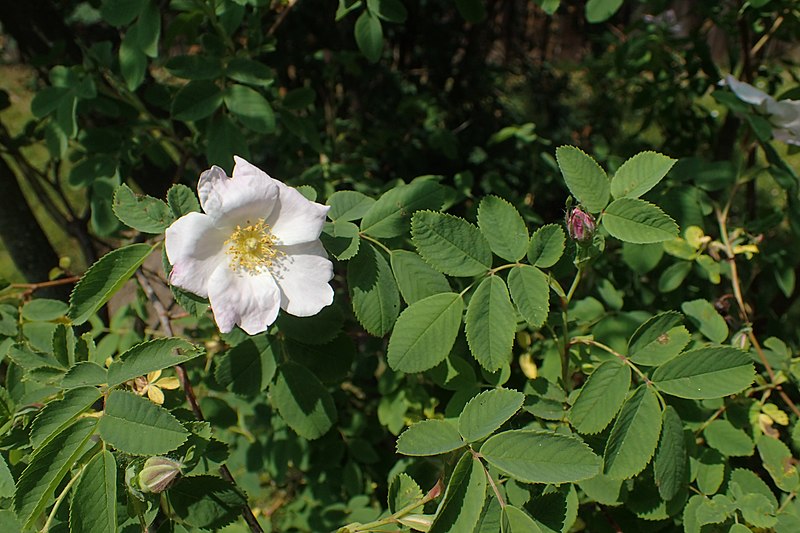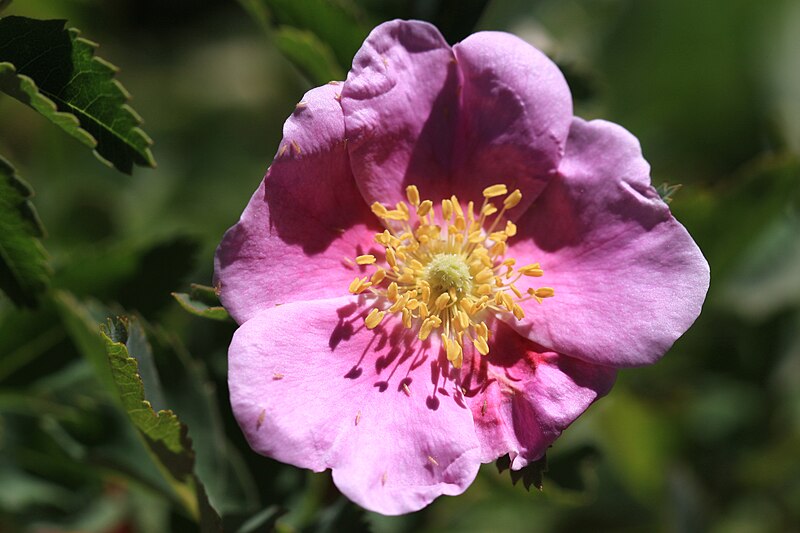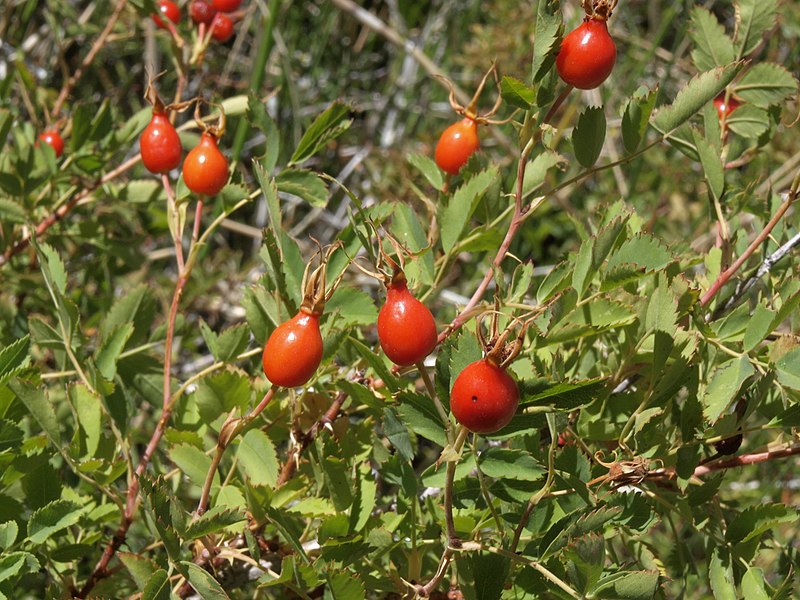Woods’ Rose Identification – Rosa woodsii
Heads up
Woods’ Rose is known scientifically as Rosa woodsii. This lovely wildflower belongs to the Rosaceae family, or the rose family.
Woods’ Rose: Key Parts in Photos





Where to find it
To catch a glimpse of the Woods’ Rose in its natural habitat, you’d want to explore places that receive a fair share of sunlight. Ideal locations include the edges of woods or clearings, meadows, prairies, and calming riverbanks. Typically, the Woods’ Rose stands between 3 to 6 feet tall. Their height is just enough for them to stand out amidst the other greenery.
How to identify Woods’ Rose
The flowers grow from new side branches on older woody stems. You might spot a solitary bloom or a group of 2 to 4 flowers together. The flowers exhibit a range of colors from pale pink to deep rose. A unique feature of these flowers is their broad, rounded petals, which sometimes have notches at their tips. In the heart of these petals, you’ll find many yellow stamens surrounding the styles. The flower’s sepals, which protect the bud before it blooms, are narrow and with glandular surface. Flower stalks tend to be smooth or just lightly hairy.
The leaves of the Woods’ Rose offer clues to its identity. They grow in an alternate pattern along the stem. These leaves are compound, which means they’re made up of smaller leaflets – commonly 7. If you examine a leaflet, you’d notice it’s often wider towards its top, has a serrated edge, and is a bit hairy on its upper surface. The lower surface is a lighter shade of green.
Another characteristic to note is the presence of prickles. At the base of some nodes, where leaves sprout, there are usually two large prickles. These prickles, a hallmark of many rose family members, are mostly straight but can sometimes curve slightly.
As seasons change, the Woods’ Rose gives way to fruits known as rose hips. These are berry-like, oval, and can be up to half an inch in diameter. As they ripen, they turn a delightful shade of purplish-red. And, if you were to open one up, you’d find several seeds inside.
Want to learn more?

Disclosure: This post includes affiliate links. If you make a purchase through these links, we may earn a commission at no extra cost to you. We appreciate your support, as it helps keep this website running. Alternatively, you can search for the book title on Amazon if you prefer not to use the links. Thank you for your understanding and support!
